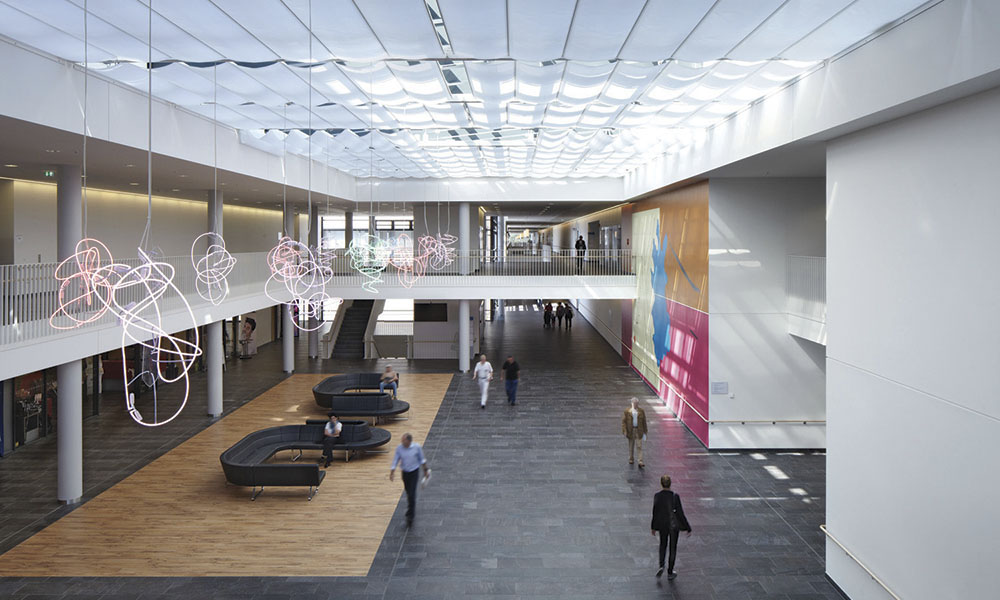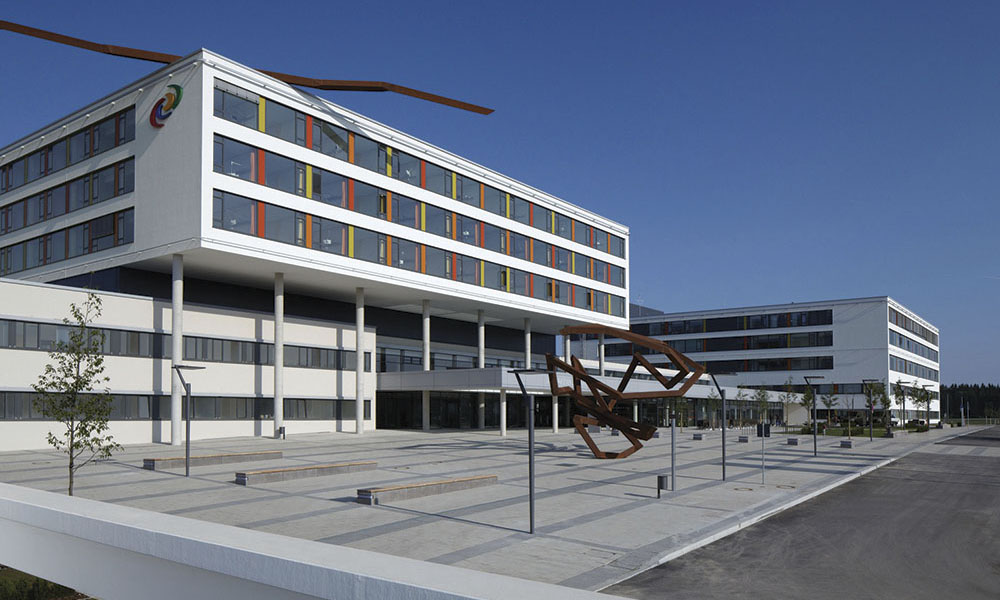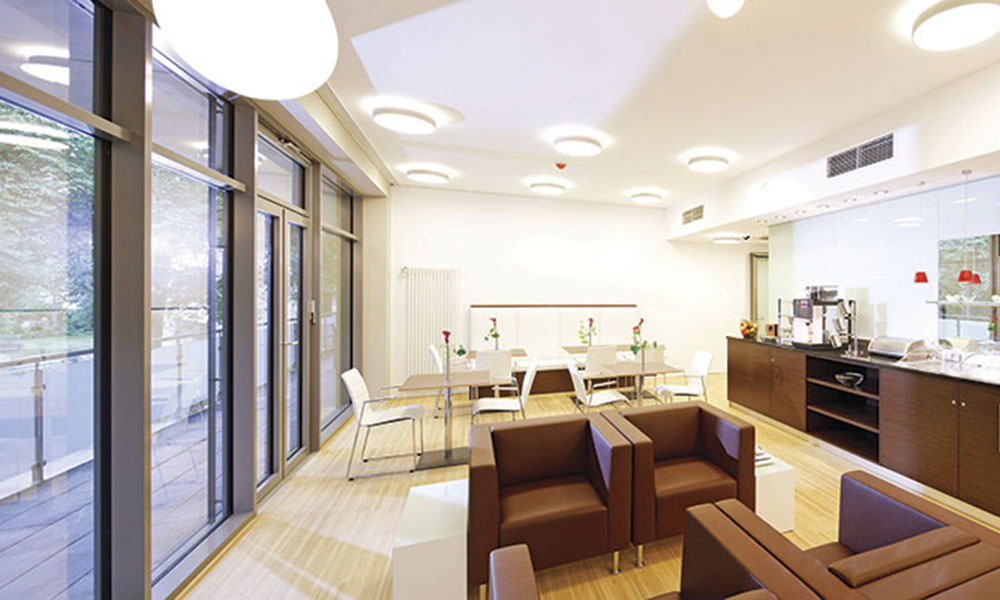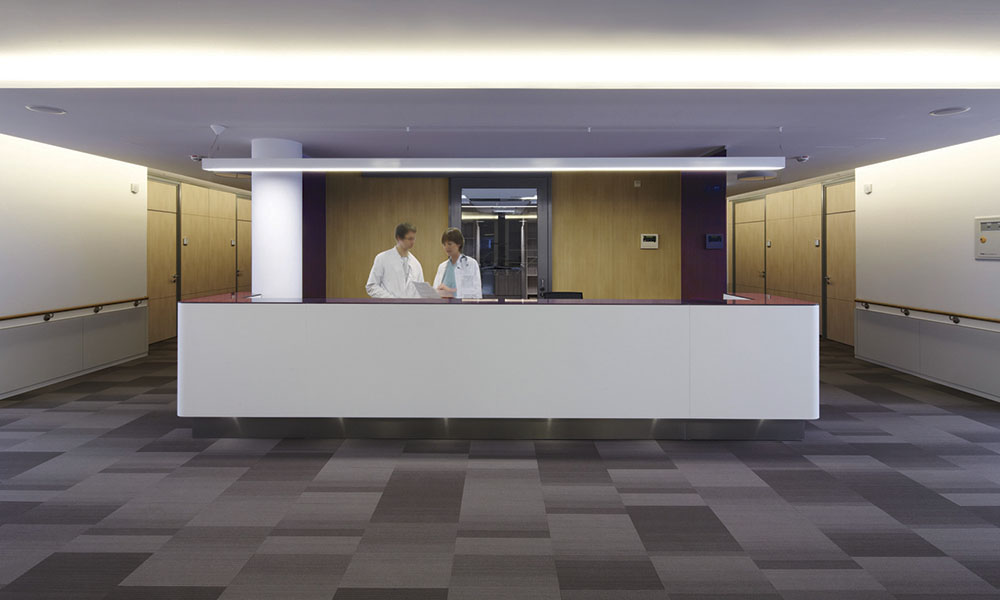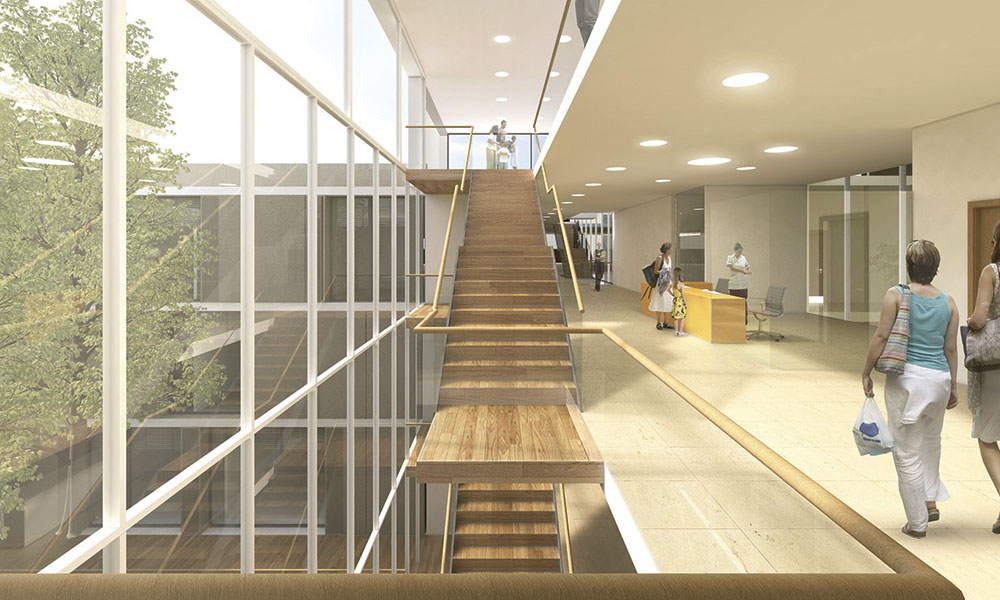Three Trends Shaping Healthcare Facility Design in Germany
By Christoph Gatermann
It’s no secret: The healthcare industry is undergoing rapid and transformational change. Whether it’s policy changes, new models of care or technology advances, the only constant is change and it’s happening all around the world. While change is inevitable, it’s important to remember that organizations, communities and countries must design for their unique end-users, resulting in vast design differences across the globe.
What works in Canada might not provide the same solutions to healthcare delivery issues in Europe. This article crosses the waters and discusses healthcare design trends in Germany.
Trend #1: Mental health
In Germany, the number of individuals over the age of 65 is above average, ranking fourth in countries with the largest aging population according to World Atlas. It’s predicted that by 2030 more than 22 million people will fall into this age category, and along with that increase will be a growing number of patients with dementia and other neurodegenerative diseases. As a result, a large number of German health systems are investing in mental health facilities to meet this increasing demand. One example is the Central Institute of Mental Health in Mannheim, Germany.
The Central Institute of Mental Health has been investing in comprehensive renovation and construction projects since 2013. Constant improvement in treatment approaches, rising numbers of mental health cases, as well as further advances in research increased the demands on the existing treatment building to such a degree that an extension was urgently needed.
The new building at the Central Institute of Mental Health will set the standard for mental health facilities in Eastern Europe. The HDR-designed facility inextricably links healthcare and research together, focusing on developing effective therapies, while also providing comprehensive treatments for patients. The open-plan design promotes communication among staff and patients, positioning the Central Institute of Mental Health as a model facility and trendsetter in healthcare, as well as psychotherapeutic and psychiatric research.
Trend #2: Consolidation
In recent years, the number of hospitals in Germany has been declining by five to 10 percent despite the steady increase in the demand for healthcare. According to a joint study by BDO and the German Hospital Institute of the Health Care Industry, three out of four hospitals are not sufficiently investing money and resources back into their facilities. Inadequate financing for hospitals is the main reason 30-50 percent of hospitals suffered financial losses for more than 10 years. This lack of investment leads to an aging and outdated infrastructure. The high investment jam and financing deficit present huge challenges for the hospitals. The result is that these outdated facilities are being shut down and consolidated into one new facility that meets the demand of a larger population.
Common design challenges when consolidating multiple facilities is cost and efficiency. For instance, three rural hospitals were merged into one new building at the SBK Villingen-Schwenningen in southwest Germany. To break down the overwhelming size of the new facility, the design team implemented Evidence-Based Design strategies and Lean processes to provide efficient workflow and easy navigation for patients and their families.
A patient tower is located in the east and in the west, providing an overview of the entire building. Attractively designed courtyards with landscape accents divide the basic body while simultaneously exposing natural light into the building. The design team welcomed natural light with a skylight in the main foyer and expansive windows in patient rooms. The design of the building is inspired by the surrounding landscape; rather than building up, the building fits horizontally among the rolling hills.
The exterior stays true to German modernism and features simple forms, cubic shapes and a white façade with yellow, red and orange accents. The interior spaces, including the 446 patient rooms, are intentionally modest, light and friendly, achieving an upscale level of quality through a minimalist design approach. Interior colors throughout the building are warm and earth-inspired. The new hospital is not only an example of excellent patient comfort, but an illustration of the growing need for consolidation.
Trend #3: Patients as consumers
Health insurance is compulsory for the entire population in Germany. With both public and private health insurance options, every German resident has their own healthcare insurance. Because of this, patients have more choices than ever to select their own healthcare experience. To satisfy the needs and wants of the patient, healthcare organizations are placing a focus on high-amenity, high-fashion design with hotel-like characteristics.
A great example is the Klinikum Essen Mitte hospital in Essen, Germany. Decorated in warm tones, this premium facility combines first-class medical care with a stylish ambience. In addition to paintings and modern sculptures, there are beds with exceptional soft attributes and exquisite bed linen. The rooms are equipped with a flat-screen TV, minibar and safe. Free Wi-Fi is provided in combination with iPads, which are free for the duration of the stay, and a unique feature that addresses the needs of younger internet-affiliated patients.
A rare feature implemented into the design is the use of textile flooring on the patient floors. With its varying dark-striped pattern structure, the carpet flooring creates a comfortable atmosphere that lowers sound, provides a pleasant, quiet mood and benefits the recovery process for patients due to its walking comfort compared to tile flooring. Furthermore, the carpet can be easily disinfected because it’s been made with pigment-dyed fibers.
This design accommodates patients by creating the most comfortable and healing environment, while providing the amenities consumers want.
Each country, region and group of people has their own specific healthcare needs. The key is to weave best practices and research with local context, creating facilities that combine the best ideas from around the world with the unique needs of the local community and its people.
Author: Christoph Gatermann
Christoph Gatermann, health principal, is a project leader and partner at the Düsseldorf office of HDR | TMK Planungsgesellschaft.
Posted May 12, 2017
More Articles:
- Behavioral Sciences Center at UTHealth Houston Features Light-Filled, Flexible Design Concept
- Virtually Confronting the Behavioral & Mental Health Crisis
- New Center for Children’s Health Breaks Ground in Flint to Serve Community’s Long-Term Recovery Needs
- Looking Back, Planning Ahead: Innovative Healthcare Trends to Watch in 2021 + Beyond
- CxA Workshop & Exam
Apr 29, 2024 – Apr 30, 2024 - EMP Seminar & Exam at CxEnergy 2024
Apr 29, 2024 – Apr 30, 2024 - CxEnergy
Apr 29, 2024 – May 2, 2024 - PHCC West 2024
Apr 29, 2024 – May 2, 2024 - Lean in Design Forum 2024
May 1, 2024 – May 2, 2024 - IFMA’s Facility Fusion Conference & Expo
May 5, 2024 – May 7, 2024 - ASHE Academy 2024
May 6, 2024 – May 10, 2024


